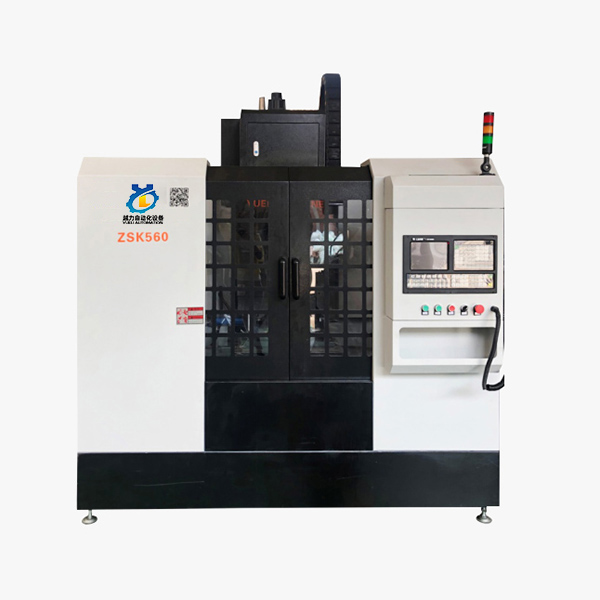- English
- Español
- Português
- русский
- Français
- 日本語
- Deutsch
- tiếng Việt
- Italiano
- Nederlands
- ภาษาไทย
- Polski
- 한국어
- Svenska
- magyar
- Malay
- বাংলা ভাষার
- Dansk
- Suomi
- हिन्दी
- Pilipino
- Türkçe
- Gaeilge
- العربية
- Indonesia
- Norsk
- تمل
- český
- ελληνικά
- український
- Javanese
- فارسی
- தமிழ்
- తెలుగు
- नेपाली
- Burmese
- български
- ລາວ
- Latine
- Қазақша
- Euskal
- Azərbaycan
- Slovenský jazyk
- Македонски
- Lietuvos
- Eesti Keel
- Română
- Slovenski
- मराठी
- Srpski језик
What is the advantages and characteristics of Drilling Tapping Milling Cutting Machine?
It seems like you are asking about a multi-functional machine that combines drilling, tapping, milling, and cutting capabilities. Such machines are often referred to as CNC (Computer Numerical Control) machines or machining centers. Here are the advantages and characteristics of a drilling tapping milling cutting machine:
 Advantages:
Advantages:
Versatility: These machines offer multiple functions in a single unit, which means they can perform various operations without the need for separate equipment. This versatility makes them cost-effective and space-efficient for manufacturing processes.
Precision: CNC machines are known for their high precision and accuracy. They are capable of producing complex and intricate parts with tight tolerances, ensuring consistent quality in the finished products.
Automation: CNC machines are computer-controlled, which allows for automation of the machining process. Once the program is set up, the machine can run autonomously, reducing the need for manual intervention and increasing productivity.
Time Efficiency: Combining multiple operations in one machine reduces the setup time between different processes. It leads to faster production cycles and quicker turnaround times for projects.
Reduced Errors: CNC machines follow programmed instructions precisely, minimizing the risk of human errors that can occur in manual machining processes.
Wide Range of Materials: Drilling tapping milling cutting machines can work with various materials, including metals, plastics, composites, and more. This flexibility allows them to handle diverse manufacturing requirements.
Complex Geometries: With the ability to move in multiple axes simultaneously, CNC machines can produce intricate shapes and geometries that would be challenging or impossible with conventional machining methods.
Characteristics:
Computer Control: CNC machines are controlled by computers that read and execute G-code instructions. Operators program the specific toolpaths and operations, and the machine follows those commands precisely.
Tool Changer: Most CNC machines come equipped with an automatic tool changer that allows them to switch between different cutting tools without manual intervention. This feature enables continuous machining and reduces downtime.
Axis Movement: CNC machines typically have three or more axes (X, Y, Z, and sometimes rotational axes), allowing the cutting tool to move in multiple directions for complex machining tasks.
Workholding Devices: CNC machines use various workholding devices like vises, clamps, and fixtures to secure the workpiece firmly during machining.
Coolant System: To manage heat generated during cutting and improve tool life, CNC machines often have a coolant system that sprays lubricant and coolant onto the cutting tool and workpiece.
Monitor and Control Panel: CNC machines feature a monitor or control panel where operators can input commands, load programs, and monitor the machining process.
Safety Features: Modern CNC machines are equipped with safety features like emergency stop buttons, protective enclosures, and safety interlocks to ensure safe operation.

Versatility: These machines offer multiple functions in a single unit, which means they can perform various operations without the need for separate equipment. This versatility makes them cost-effective and space-efficient for manufacturing processes.
Precision: CNC machines are known for their high precision and accuracy. They are capable of producing complex and intricate parts with tight tolerances, ensuring consistent quality in the finished products.
Automation: CNC machines are computer-controlled, which allows for automation of the machining process. Once the program is set up, the machine can run autonomously, reducing the need for manual intervention and increasing productivity.
Time Efficiency: Combining multiple operations in one machine reduces the setup time between different processes. It leads to faster production cycles and quicker turnaround times for projects.
Reduced Errors: CNC machines follow programmed instructions precisely, minimizing the risk of human errors that can occur in manual machining processes.
Wide Range of Materials: Drilling tapping milling cutting machines can work with various materials, including metals, plastics, composites, and more. This flexibility allows them to handle diverse manufacturing requirements.
Complex Geometries: With the ability to move in multiple axes simultaneously, CNC machines can produce intricate shapes and geometries that would be challenging or impossible with conventional machining methods.
Characteristics:
Computer Control: CNC machines are controlled by computers that read and execute G-code instructions. Operators program the specific toolpaths and operations, and the machine follows those commands precisely.
Tool Changer: Most CNC machines come equipped with an automatic tool changer that allows them to switch between different cutting tools without manual intervention. This feature enables continuous machining and reduces downtime.
Axis Movement: CNC machines typically have three or more axes (X, Y, Z, and sometimes rotational axes), allowing the cutting tool to move in multiple directions for complex machining tasks.
Workholding Devices: CNC machines use various workholding devices like vises, clamps, and fixtures to secure the workpiece firmly during machining.
Coolant System: To manage heat generated during cutting and improve tool life, CNC machines often have a coolant system that sprays lubricant and coolant onto the cutting tool and workpiece.
Monitor and Control Panel: CNC machines feature a monitor or control panel where operators can input commands, load programs, and monitor the machining process.
Safety Features: Modern CNC machines are equipped with safety features like emergency stop buttons, protective enclosures, and safety interlocks to ensure safe operation.
Previous:What are the role of CNC Machine?





